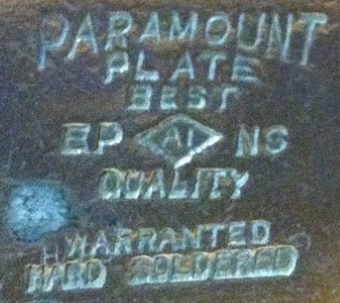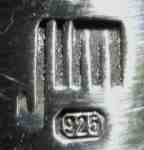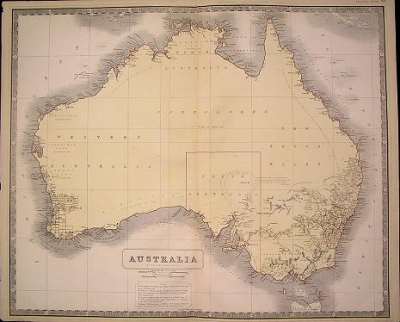THE DIRECTORY OF AUSTRALIA SILVERSMITHS
|
|
|
created by Giorgio B. owner of www.silvercollection.it ©  |
| This is a page of A Small Collection of Antique Silver and Objects of vertu, a 1500 pages richly illustrated website offering all you need to know about antique silver, sterling silver, silverplate, sheffield plate, electroplate silver, silverware, flatware, tea services and tea complements, marks and hallmarks, silver marking system and silver hallmarks guide, articles, books, auction catalogs, famous silversmiths (Tiffany, Gorham, Jensen, Elkington, WMF, Reed & Barton, Mappin & Webb, Bateman Family), history, oddities ... SITE MAP - HOME PAGE |
| AUSTRALIA SILVERSMITHS ALPHABETICAL LISTING - M - N - O - |
| AUSTRALIAN SILVERSMITHS
A
B
C
D
E
F
G
H
I
J
K
L
M
N
O
P
Q
R
S
T
U
V
W
X
Y
Z
NOT IDENTIFIED ALPHABETICAL LISTING OF MARKS |
(click on the photo to enlarge image)
| SILVERSMITH'S NAME AND MARKS |
SILVERSMITH'S INFORMATION |
| W. MACDONNELL & CO |
New South Wales, Sydney active 1860s/1890s |
| MACDONNELL & RODICK |
New South Wales, Sydney active 1890s |
MATHER Margaret |
Tasmania, Hobart (c.1919-2002). Active 1947-1994. Working for Sargison operated also on her own workshop in Hobart |
James McBEAN & Son |
Victoria, Melbourne active 1850s/1890s at 112 Elizabeth Street, Melbourne |
McDONALD & Co
  |
South Australia, Adelaide They used trademarks WINDSOR PLATE and PARAMOUNT PLATE |
McLEAN John

 |
New South Wales, Sydney active 1860s/1870s/font> |
| J.McLEAN & Son |
New South Wales, Sydney active 1870s/1890s |
| J.McLEAN & Sons |
New South Wales, Sydney active 1870s |
METCALF James Irvin (Jim) |
Newnham College Launceston Tasmania (1970s-2015) and Cairns North Queensland Australia |
MEYER Johannes (Hannes)

 |
Western Australia, Perth Hannes (born Johannes) Meyer was born into a family of court jewellers in The Netherlands where he trained. He arrived in Perth in 1954 where he is known to have worked as a silversmith 1966 - 1979 before moving to Queensland. He used numerous marks; 1) JM in a bottle shaped cartouche. 2)HM in a rectangle with chamfered corners. 3)Several versions of an incuse star. Ref. Marks on Australian Silver 1950 - 2005 by Christine Erratt |
MOLE Frederick James

 |
Queensland, Brisbane active 1913-1957. Thereafter the business was styled F.J. Mole & Co and now as Silversmiths & Platers |
| MOSELY MOSS COHEN & CO |
New South Wales, Sydney active 1830s/1840s |
NEWMAN HENRY |
Victoria, Melbourne active c. 1890 |
|
HALLMARKS OF ENGLISH SILVER -
MAKER'S MARK IDENTIFICATION
|
| IMAGES | A& AC |
AD AK |
AL AZ |
B& BB |
BC BO |
BP BZ |
C& CA |
CB CC |
CD CF |
CG CL |
CM CS |
CT CZ |
D& DB |
DC DL |
DM DZ |
E& EA |
EB ED |
EE EH |
EI EO |
EP EZ |
F& FD |
FE FJ |
FK FZ |
G& GB |
GC GG |
GH GL |
GM GR |
GS GZ |
| IMAGES | H& H& |
HA HB |
HC HE |
HF HL |
HM HU |
HV HZ |
I& IG |
IH IL |
IM IZ |
J& JA |
JB JC |
JD JG |
JH JK |
JL JQ |
JR JR |
JS JS |
JT JZ |
KA KZ |
L& LB |
LC LZ |
M& MB |
MC MI |
MJ MZ |
N& NZ |
OA OZ |
P& PK |
PL PZ |
QA QZ |
| IMAGES | R& RB |
RC RG |
RH RK |
RL RQ |
RR RZ |
S& SB |
SC SI |
SJ SR |
SS SZ |
T& TC |
TD TG |
TH TN |
TO TS |
TT TZ |
UA UZ |
V& VZ |
W& WA |
WB WB |
WC WC |
WD WE |
WF WG |
WH WL |
WM WM |
WN WR |
WS WS |
WT XZ |
YA YZ |
ZA ZZ |
|
BRITISH TOWN MARKS AND DATE LETTERS
|
AUSTRALIA AND ITS SILVER
A BRIEF HISTORY
|
|
